Jump to: Trees in the Spring Season, Trees in Summer, Trees in Autumn, Winter Tree Care, Best Season to Plant a Tree, Routine Tree Maintenance, Contact Your Local Tree Maintenance Program Experts
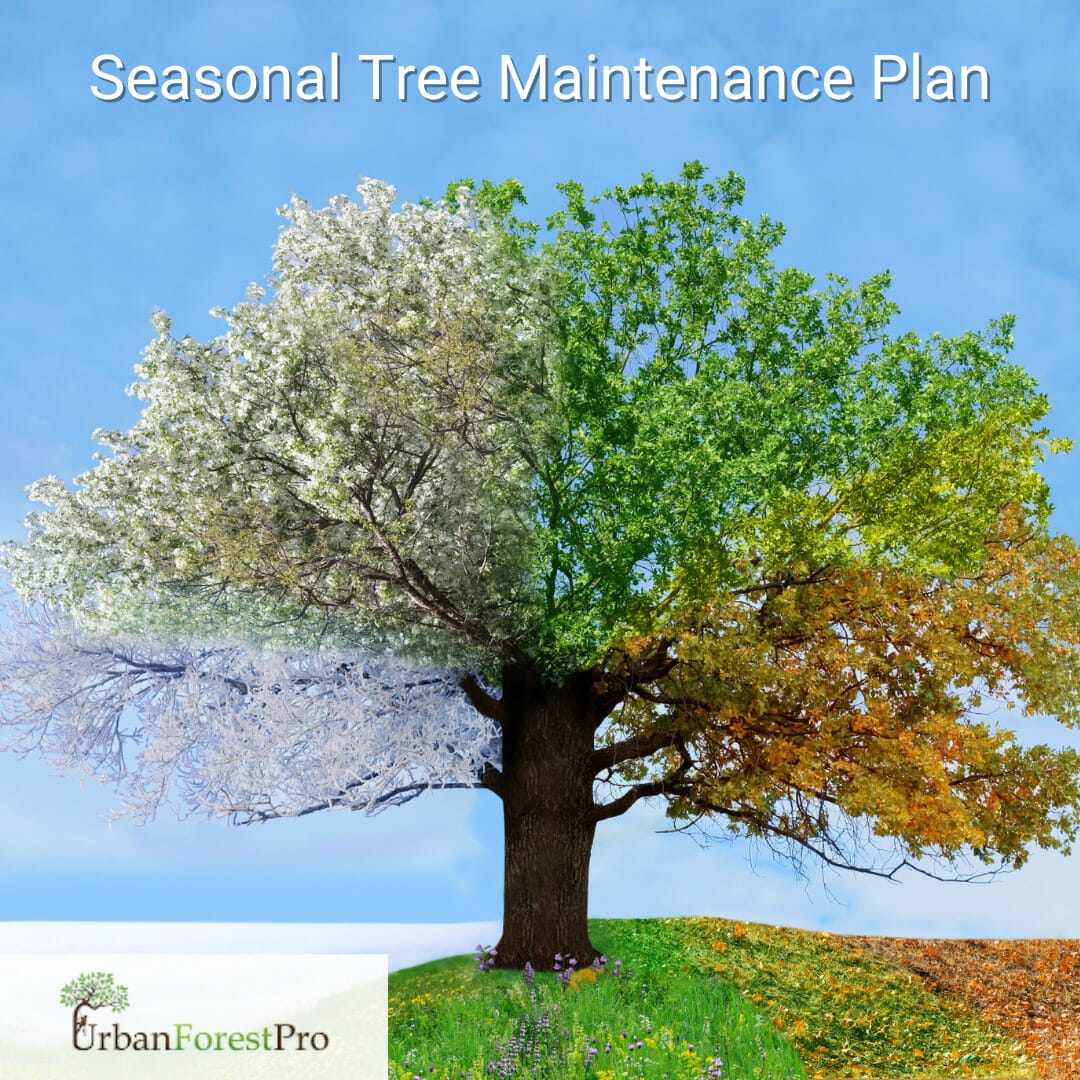
In the Pacific Northwest, trees help us mark the seasons. Shade in the summer, tapestries of color in the Fall, and signs ofrebirth in the spring. Even in the winter, evergreen trees provide pops of green when everything else is gray.
Let’s take a look at how trees change through the season. They act a little like animals – including humans. This changes from region to region, of course, but in the Pacific Northwest, there are
four distinct seasons during the year. We’ll start in the spring because that’s when deciduous trees start coming back to life.
Trees in the Spring Season
After a long winter of cold temperatures and little sun, trees begin to respond to the longer days of spring. As daylight increases and the temperatures begin to rise, tree roots begin actively
searching out water and nutrients that aid tree growth. While remaining largely dormant during the winter, the metabolism of the tree ramps up once again. Chlorophyll is produced and new rapid growth is spurred by photosynthesis. Buds begin to appear and new twigs grow towards the sun.
New wood is created around the trunk of the tree to help support the added weight of the
new growth. Just like humans, trees are ready to start getting things done when the sun comes out. This is the time to inspect the tree as well. Starting at the trunk of the tree, look for new damage or old damage that has grown during the winter. This could be broken branches, small holes in the trunk, and fungi growth. There may also be evidence of insect infestations. If there is new or worsening damage, it may be time to call a professional tree care expert. They can spot problem areas and recommend action to help the tree take advantage of the spring weather.
 Make sure the trees have enough water during the spring, an important time for growth. If you can, check the soil moisture 4 to 6 inches below the surface. If it’s dry, more water might be
Make sure the trees have enough water during the spring, an important time for growth. If you can, check the soil moisture 4 to 6 inches below the surface. If it’s dry, more water might be
needed. However, in the Portland metro area, enough water never seems to be an issue in the spring. Now is a good time to check mulch levels, too. Especially in younger trees that were planted the previous fall (more on that later). The mulch itself shouldn’t be piled up against the trunk of the tree like a pyramid. Think of a bowl, with the mulch starting a few inches away from the trunk. Mulch is there to help conserve water around the base of the tree for its roots. While there may be some beneficial nutrients in the mulch you’re using, the main job is to make sure the tree has the water it needs. Before placing the mulch, inspect around the tree for any weeds or wayward plants that have sprouted up too close to the tree. Weeds, ivy, and grass will compete with the tree for water and nutrients. Mulch will also help keep these invaders in check.
Spring is the perfect time to pull these weeds as the ground is still moist, making it easier to pull. It’s also the time to make sure the tree survived the long, cold winter. To make sure your trees
are still in good health, consider having seasonal routine tree maintenance done on your trees. Professional tree-care experts will know what to look for to make sure your trees have a strong growing season ahead. They can also make suggestions, or put together a tree maintenance plan, for things you can do to protect the tree for the upcoming dog days of summer.
 Trees in Summer
Trees in Summer
All of the action that took place in spring begins to slow during the longer, warmer days of the summer months. As the saying goes, these are the lazy days of summer. Trees essentially shut
down during the heat of the day because of the lack of water. But just because your trees are conserving their energy doesn’t mean you can. You should still be performing seasonal tree maintenance checks of your trees throughout the summer. Are there any branches that are bare of leaves? Notice any unusual holes in the trunk of the tree? Did a recent windy day break any branches? These are all obvious signs that action needs to be taken before potentially costly damage can occur. Just make sure you know what you’re doing beforehand. An incorrect trimming or pruning could cause more harm than good to the tree. This includes dealing with insects. For the most part, insects and trees get along just fine. Take tent caterpillars for examples. These insects will set up huge camps in trees throughout Portland. However, even though it might look like a blight on the tree, they cause very little damage to the tree in most cases. The branches may be stripped of leaves, but those will grow back.
Other insects, such as the box beetle, do their damage out of sight. Bark beetles bide their time under the surface of the tree, laying eggs under the bark of dying or distressed trees. As they
hatch, these beetles eat away at the tree from the inside, disturbing the natural flow of nutrients. After a year or two – and the damage is done – they will move on to the next tree to start the cycle over again. That’s why tree care maintenance inspections are so important throughout the year, but especially so in the summer. When drought conditions are in place, it’s the perfect time for the bark beetle to go to work.
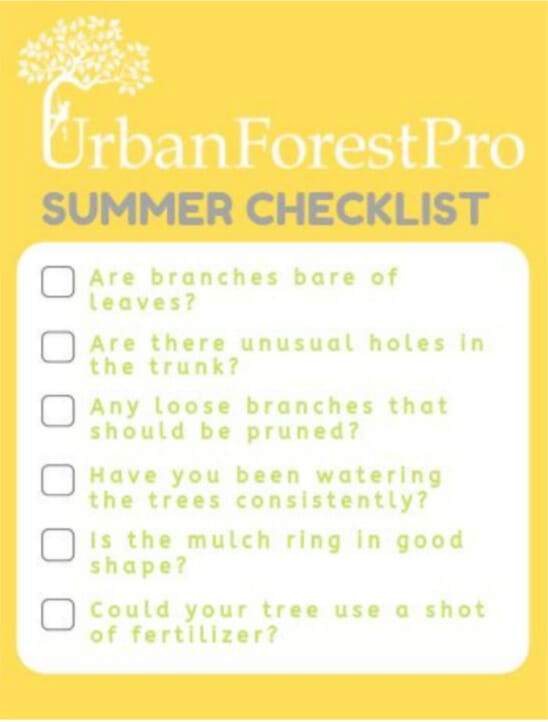 While we don’t usually experience extreme heat in the Portland, OR, area, we are seeing extended amounts of continually hot weather. When drought conditions hit, it’s important to water your trees once a week, giving the ground around the trunk a good soaking. This is better than watering the tree many times a week for shorter amounts of time and will keep the tree strong. As always, take a look at the mulch ring around the tree. Has it been disturbed by lawnmowers, animals, or even children playing around the tree? Build it back up to make sure the water stays in
While we don’t usually experience extreme heat in the Portland, OR, area, we are seeing extended amounts of continually hot weather. When drought conditions hit, it’s important to water your trees once a week, giving the ground around the trunk a good soaking. This is better than watering the tree many times a week for shorter amounts of time and will keep the tree strong. As always, take a look at the mulch ring around the tree. Has it been disturbed by lawnmowers, animals, or even children playing around the tree? Build it back up to make sure the water stays in
place after watering. It doesn’t hurt to give the tree a little boost in the form of fertilizer. The extra nutrients you provide your tree will help with leaf and shoot growth and the overall health of the tree. Certain fertilizers can also defend against disease and pests. You may be asking yourself, “Who does all of this stuff for the trees in the forest?” In natural areas like Gifford Pinchot National Forest, these nutrients are abundant on the forest floor. But urban and even suburban trees need more care because many of those nutrients have been taken away.
As is the case during any time of year, if there seems to be an issue with the tree, such as branches with no leaves or obvious signs of insects causing problems, contact Urban Forest Pro.
We give the tree a thorough inspection and find any issues that are affecting the tree.
 Trees in Autumn
Trees in Autumn
As much as the shade is appreciated in the summer, it’s hard to beat the colors of fall in the Pacific Northwest. All manners of orange, brown, red, and yellow are on full display to create a
beautiful landscape. Until, of course, they fall and you have to rake them up or clean them out of the gutters. Even though the days are getting shorter and the temps drop, trees can still use watering if the rain hasn’t begun to fall. For extra protection, wrap trunks of trees in burlap or plastic sheeting to help protect it from temperature drops. Near the end of fall, before the temperatures get too cold, is a good time to apply some extra mulch around the trunk. It will help retain water, as it does during every season, but also acts as a blanket of sorts to protect the root structure. However, consider pulling the mulch away from the tree a little more than usual. While you still want the tree to be getting the water it needs, standing water around the trunk can cause fungi. You don’t want to discover a fungi outbreak during the spring inspections.
Even though the fallen leaves are a pain to pick up, you now have a chance to get a good look at the tree. This is the best time of year to cut back trees or pruning dead limbs of certain trees. Oddly enough, this helps the tree grow because it has less work to do. Removing dead branches can prevent a bigger problem in the winter, especially the bigger branches. They could fall at unexpected times and do real damage to your personal property. While we’re interested in routine tree maintenance, you may also want to walk around your house for some quick inspections, too. Look for any wayward sprouts that may be coming up near your house. Allowing these little sprigs to gain a foothold could endanger your foundations, small shoot by small shoot. Pull them up as you see them.
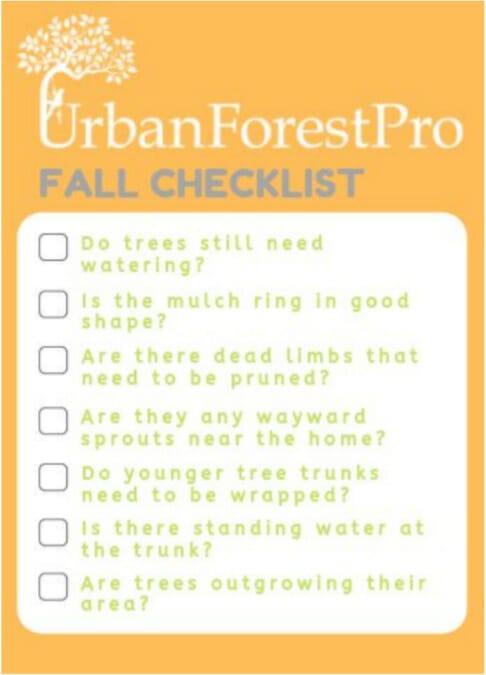 To make sure the pruning is done properly, schedule a visit with a certified arborist. An improperly pruned tree can cause complications over the winter and into spring. There are also several trees that shouldn’t be pruned in the fall, that’s why working with a pro is so important.
To make sure the pruning is done properly, schedule a visit with a certified arborist. An improperly pruned tree can cause complications over the winter and into spring. There are also several trees that shouldn’t be pruned in the fall, that’s why working with a pro is so important.
Other preventative measures that can be taken include spraying the tree to prevent insects and other pest looking for a home. There are several organic sprays on the market that have
varying degrees of effectiveness and eco-friendliness. If this is your first go-around with spraying your trees, we recommend consulting a tree-care expert. These professionals know what works and what doesn’t and can help steer you in the right direction. There may be times when a non-organic spray is best and point out organic sprays that may not be as friendly to the environment as they say. With such a diversity of trees – and pests! – in the Portland area, you’ll have to do some research to make sure you’re using the right products on the right trees at the right time.
Urban Forest Pro has more than 15 years of experience in the Portland, Or, area. Give us a call and we can find the right solution for your fall tree care.
Finally, are your trees looking a little too healthy? By that we mean have they outgrown their area? Trees that have grown tall enough to interfere with power lines or pose a threat to structures can have their height reduced. Preferable to just topping the trees, reducing the height of the tree should still be done sparingly and by certified arborists.
Winter Tree Care
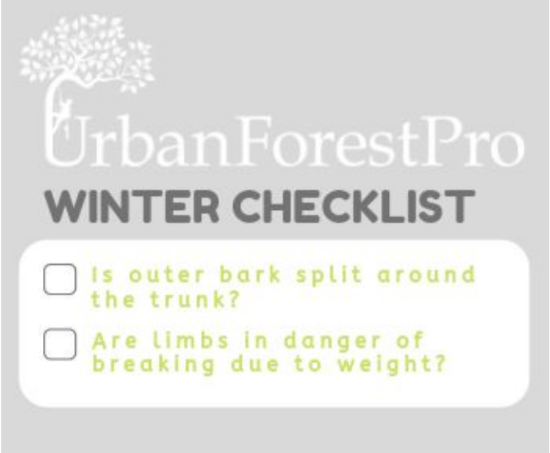 By the time winter temperatures hit the Pacific Northwest, the trees have already been winterizing themselves. Just like we prepare for the colder months by breaking out the flannel
By the time winter temperatures hit the Pacific Northwest, the trees have already been winterizing themselves. Just like we prepare for the colder months by breaking out the flannel
and fleece, trees are taking steps to shut down. Falling leaves are signs of this and trees also take action in their cells to prepare for months of dormancy. But you can’t ignore trees during the winter, either. The fluctuation of temperatures in early winter – sometimes up to 20 degrees – can cause cold stress. This is when the outer bark is split, exposing the inner wood. While there isn’t much that can be done about this, and the tree will eventually heal itself, consider wrapping the area. Perhaps the biggest concern when it comes to winter tree maintenance is the weight of snow or ice on branches. Large branches can hold more snow and ice and may snap during windy periods. Not much can be done about the snow, but you can keep an eye on potential problems and take steps to protect the surrounding area. Some pruning can happen during the winter as well as the cold weather can make branches harder and more susceptible to snapping. For safety, consult an experienced tree care maintenance specialist for this kind of work. They’ll know where to prune any dead branches and inspect whether or not other branches need attention.
 A Final Note: Best Season to Plant a Tree
A Final Note: Best Season to Plant a Tree
We’ve just taken a look at what happens to trees during the four seasons and what steps you can take to make sure they grow strong and healthy. For the most part, these guidelines deal with
established, healthy trees. In reality, there’s not much that can be done when a tree is decayed beyond repair or just dead. If that’s the case, call Urban Forest Pro. If the tree can’t be saved, we can remove the tree, grind the stump, and even plant a tree better suited for the situated.
But when to plant new tree? Spring seems like an obvious choice. There’s plenty of rain, sun, and that’s when everything is waking from its winter slumber and ready to grow. But it’s what happens before that winter slumber that gives trees and shrubs the energy to come alive in the spring. As beautiful as the spring is, it’s not the best time to start establishing new roots. With summer – and high temps – just a few months away, the stronger the root system the better for new trees. By planting a tree during the fall, the root system has a chance to get established during the moderate and wet conditions. Because it’s already established when awakening from its dormant winter state, the tree can start growing right along with everything else. We also have more valuable information on planting a tree, as well as what kind of tree, what to look for when buying a new tree, and how to plant a new tree.
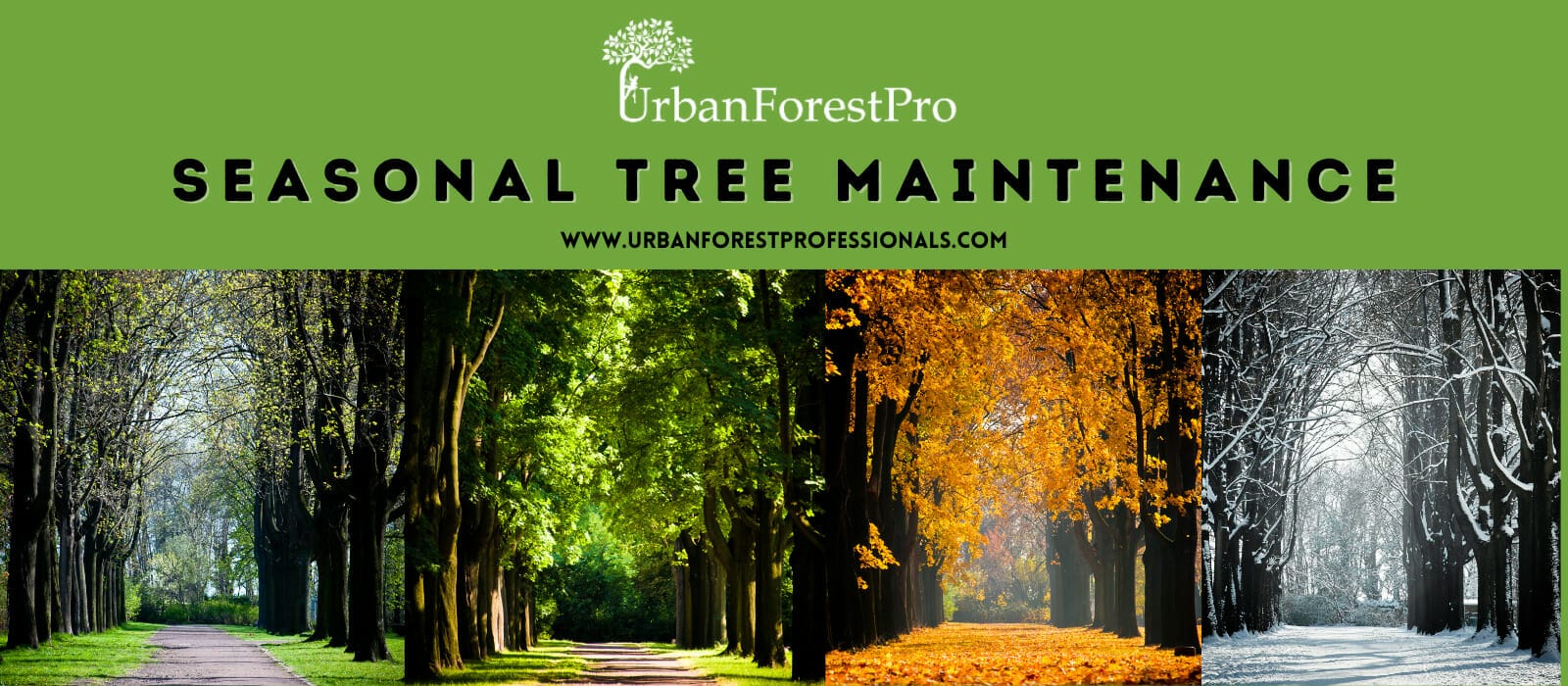
Routine Tree Maintenance All Year Round
Portland, Oregon, is known for its tree canopy, often ranked in the top 10 nationally for urban trees. Trees help us mark the seasons: Spring renewal, Summer shade, Autumn colors, and
Winter starkness (although a blanket of snow often perks things up). Routine tree maintenance promotes long-term stability, it improves your trees appearance, and ensures the health and safety of your trees, while keeping your landscape looking healthy, full, and beautiful. Routine tree maintenance costs vary on the season and scope of work.
Contact Your Local Tree Maintenance Program Experts
A tree maintenance program provides guidelines and strategies to help ensure the health and survival of your trees. Contact the tree maintenance plan experts at Urban Forest Pro at (503) 776-0934, for more information on assessing your trees overall health and safety.
See What Our Happy Clients Say
“Easy people to work with and they did a great job removing a large maple tree and trimming my laurel hedge.”
Tom B.
Rating 5/5 ⭐⭐⭐⭐⭐
See our 4.8 rating and read more of our 196 reviews on Google!
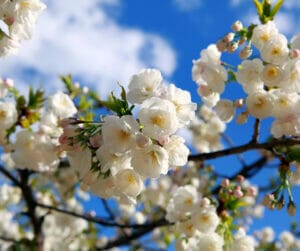

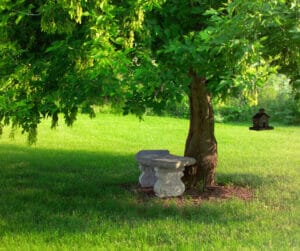 Trees in Summer
Trees in Summer Trees in Autumn
Trees in Autumn A Final Note: Best Season to Plant a Tree
A Final Note: Best Season to Plant a Tree